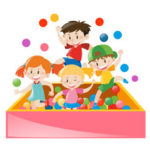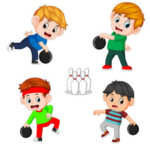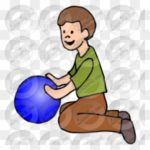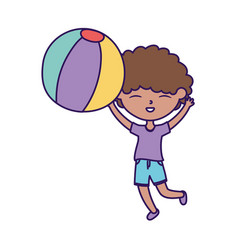
by Neetu | Jun 25, 2020 | Fitness Activity
Purpose of Event
This activity will give the students the opportunity to learn and practice the overhand throw at a target.
Activity cues
Depending upon the skill level and experience of children use appropriate throwing cues (see PE Central throwing cues)
Equipment Required
Cut snowman targets from large sections of cardboard and decorate by having students draw and paint on the cutouts. Tape snowmen on wall Plastic grocery bags (rolled into balls and taped) are used for snowballs. Use a restraining line, such as a jump rope, to keep students about 5’away from the target.
Description
This activity brings the fun of throwing snowballs inside where it is warm, and no one gets cold! Students throw the “snowballs” at the snowman to see if they can hit different parts of the target.
Adaptations for Students with Disabilities
Move target closer to the students if they don’t have the strength to throw the balls to the target. Using plastic grocery bags, you can roll the balls into smaller sizes for students with smaller hands. The rolled bags also allow for better gripping.
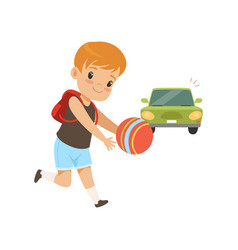
by Neetu | Jun 25, 2020 | Fitness Activity
Equipment
4 boundary cones
Spot markers – 1 per student.
Foam ball – 1 per student.
Skill cards – how to hold the ball using both the hand.
Activity
- Ask the kids to stand at their home base and take their personal space.
- Assigned the kids to come to get the ball. (use the strategy like kids standing on the blue home base to collect the ball and placed it in between their legs.)
- Freeze position – put the ball on the ground placing in between two legs.
- Show the kids how to hand the ball (use skill cards).

Stationary dribble
- Ask the kids to place both legs shoulder-width apart holding the ball with both the hands.
- Ask the kids to hold the ball wrist high.
- Go- drop the ball trying to hit the spot markers.
- Catch the ball after the 2nd
- Challenges
– change the level ask the kids to drop the ball from the high level
Catch the ball after the first bounce.

by Neetu | Jun 25, 2020 | Fitness Activity
Purpose of Event:
The purpose of this activity is to introduce young children to the forward roll.
Equipment Require
Foam Incline Wedge Mat (The best foam wedge for young children is one that is 10 inches at the top to 2 inches at the bottom along a 30-inch length. The wedge should be 18″ wide and can be made by cutting dense foam to the described dimensions or purchased through a physical education catalog equipment company.)
Also needed is a wooden box that is 10 inches high and 18 by 18 inches square for the child to stand on. The box can be built out of plywood.
Description
It is much easier for young children to learn to do a forward roll down an incline than it is on a flat surface. Place the wedge up to the edge of the wooden box. Ask the child to stand on the box and face the incline. The child’s hands should be placed on the wedge a few inches from the child’s feet. Point the fingers forward and slightly bend the knees. Ask the child to put their chin on their chest, raise their bottom in the air, and push off with the feet.
Teacher Role:
The teacher should make sure the child’s head is tucked by placing a hand on the back of the child’s head and gently moving the chin toward the chest. Use the other hand to gently push on the child’s bottom to start the roll. The teacher should make sure the child rolls onto the back and shoulders as opposed to rolling onto the head.
Lack of Equipment:
Some preschools may lack enough equipment to allow all children to practice forward rolls at the same time. If this is the case, rolling might best be taught as a station activity. One child works with the teacher at the polling station while the other children practice jumping, balancing, and or other appropriate station activities.
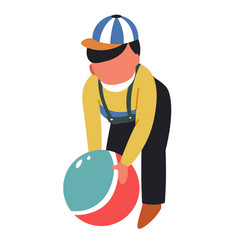
by Neetu | Jun 25, 2020 | Fitness Activity
Purpose of Activity
To teach young children the proper techniques for rolling a ball.
Activity cues: Push, No Bounce
Equipment Require
One playground ball (or another type) per student, Targets (bowling pins, soft drink bottles, pictures taped to the wall, etc.)
Description of Idea
Set up various targets around the activity area. Before moving to the targets demonstrate to children how to roll the ball–stress NO BOUNCE is present in a roll, and show them the difference. Demonstrate how to “push” the ball from a seated position then progress to standing. (This helps to eliminate the “throwing” urge). After several rolling attempts, move students to specified targets, and have them practice knocking things over, hitting pictures, etc. Have students reset targets on their own.
Adaptations for Students with Disabilities:
Students can use feet to roll rather than hands, only roll at stationary pictures, etc.
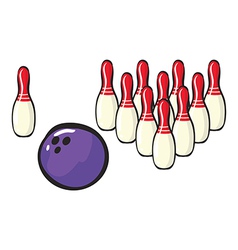
by Neetu | Jun 25, 2020 | Manthan
Aim
To have students practice the underhand motion of bowling.
Activity cues: “Reach back”, “Arm close to the side of body”, “Step with the opposite foot”
Equipment Require
Plastic 16-20 oz. bottles or bowling pins, Small foam balls, Poly spots
Description
Young children get excited about knocking bowling pins over with a ball. They have very little concern about scoring or other competitive aspects of the formal game. Here are ways to present the activity and two ways to organize the pin set-up.
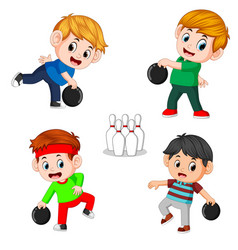 Related to both pin setup and presentation
Related to both pin setup and presentation
In a traditional sense, the teacher can show children how to set up pins in a conventional manner. Ask them to count the number of pins in each row. First row “1,” second row “1, 2,” third row “1, 2, 3,” and fourth row “1, 2, 3, 4”; then confirm that there is a total of ten pins by counting them all. This integrates numeric concepts into the p.e. activity. If the teacher has placed small round stickers on the floor, younger students will have an easier time putting pins in the same arrangement each time.
In order to maximize participation, this would need to be presented in the context of a number of throwing stations. Otherwise, the teacher would need a lot of pins and balls to keep the group size small.
Pin setup
As an alternative, ask students to design their own pin arrangements and see how the different arrangements affect the way the pins fall.
Presentation
It is preferable that students work in small groups in order to maximize participation. For example, there might be one student bowling while one or two others set up the pins. Students rotate positions. Since the emphasis is on the underhand throw, (as opposed to the number of pins knocked down), the teacher might use less than ten pins in order to accommodate multiple stations. Very young children will perceive a challenge when throwing at maybe 3 pins from an
appropriate distance (appropriate distance maybe 5-7 giant steps away from the roller of the ball and it should not be a regulation size bowling alley length). And, preschoolers can still experiment with various pin arrangements even with only three pins.
For either presentation, each time the students set up their pins, they should return to a poly spot on the floor to make their underhand throw. Initially, the teacher should place more emphasis on the arm swing than other aspects of the throw. The arm swing should begin with a “reach back”, swing forward “close to the body”, and release the ball at a low level (“no bounce”)
(remembering to give only one cue at a time). “Step with the opposite foot” may be an appropriate cue only for students who are more developmentally advanced.









